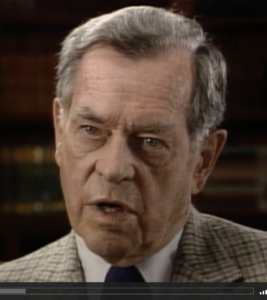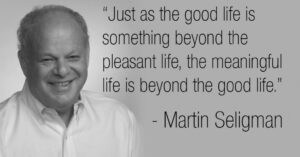Tradition One Example
Here’s a simple, real-world example that shows Tradition One in action in a friendship:
Tradition One:
“Our common welfare should come first; personal progress for the greatest number depends on unity.”
Scenario:
Two friends, Alex and Jamie, planned to co-host a small gathering. Jamie often runs late and changes plans last-minute, which frustrates Alex. After a recent incident, Alex feels disrespected and wants to cancel future plans.
Applying Tradition One – “Our common welfare should come first; personal progress for the greatest number depends upon unity.”
1. Pause for Perspective
- Alex remembers that the goal isn’t to “win” but to protect the friendship and their own peace.
- Instead of cutting off Jamie, Alex takes time to calm down and consider what’s best for the relationship and their own well-being.
2. Have a Respectful, Honest Conversation
- Alex says, “I really value our friendship, and I want us to keep enjoying our time together. But when plans change last-minute, I end up feeling anxious and overlooked.”
- This prioritizes unity and mutual respect—not blame or control.
3. Create a Boundary That Supports Both
- They agree on a new plan: Jamie will give a heads-up if they’re running late, and Alex will plan flexibly or set limits on certain commitments.
- The relationship is preserved and both people feel heard and respected.
Outcome:
Instead of focusing on being right or giving up on the relationship, they worked toward unity by being honest, setting respectful boundaries, and focusing on what’s best for both of them.
Tradition Two Example
Here’s a simple, real-world example that shows Tradition Two in action in a romantic relationship:
Tradition Two:
“For our group purpose there is but one authority—a loving God as He may express Himself in our group conscience. Our leaders are but trusted servants—they do not govern.”
Scenario:
Taylor and Morgan, a couple, are arguing over how to spend their weekend. Taylor wants quiet time at home; Morgan wants to go out with friends. Tension rises as each tries to push their own agenda.
Applying Tradition Two – Shared Guidance, Not Control
1. Pause and Invite Higher Guidance
- Instead of arguing, they take a break and reflect on what a loving, balanced choice might look like—this is like listening for a “group conscience” guided by mutual respect and a Higher Power.
2. Practice Equality, Not Control
- Taylor says, “I realize I’ve been trying to control the plan. I want us both to feel good about how we spend time.”
- Morgan responds, “I hear that. I don’t want to pressure you either. Maybe we can find something that meets both our needs.”
3. Trust Each Other as Servants, Not Governors
- They decide to spend Saturday evening with friends (Morgan’s choice), and Sunday as a quiet day at home (Taylor’s need).
Outcome:
Instead of pushing their own way, they paused, listened, and worked together as equals. They trusted a higher principle—love, respect, and compromise—to guide their decision, rather than fighting for control.
Tradition Three Example
Here’s a simple, real-world example that shows Tradition Three in action in a work relationship:
Tradition Three:
“The relatives of alcoholics, when gathered together for mutual aid, may call themselves an Al-Anon Family Group, provided that, as a group, they have no other affiliation.”
At its core, this Tradition is about belonging without conditions, inclusion, and avoiding distractions or divisions based on outside affiliations or expectations.
Scenario:
Jordan and Sam are coworkers on a team project. Sam is introverted and doesn’t engage much socially at work, while Jordan thrives on collaboration and team bonding. Jordan starts to feel annoyed and distant, thinking Sam “isn’t a team player.”
Applying Tradition Three – Acceptance Without Conditions
1. Focus on the Shared Purpose
- Jordan reflects: “Our purpose is to work well together and complete the project—not to be socially alike.”
- Jordan shifts focus from trying to change Sam’s personality to collaborating respectfully.
2. Practice Inclusion Without Pressure
- Jordan invites Sam to optional meetings without expecting them to participate socially.
- Sam feels more accepted and slowly opens up in a professional, comfortable way.
3. Let Go of Outside Expectations
- Jordan stops expecting Sam to conform to their own ideas of a “good teammate” and starts appreciating Sam’s quiet strengths.
Outcome:
The relationship improves as Jordan practices acceptance over expectation, keeping the focus on their shared work—not on personal differences. By letting go of conditional thinking, unity and cooperation grow naturally.
Tradition Four Example
Here’s a simple, real-world example that shows Tradition Four in action in a friendship:
Tradition Four:
“Each group should be autonomous, except in matters affecting another group or Al-Anon or AA as a whole.”
This Tradition highlights the value of autonomy—allowing others the freedom to make their own choices—while recognizing when those choices impact the relationship as a whole.
Scenario:
Riley and Casey are close friends. Riley loves to plan everything down to the detail, while Casey prefers to be spontaneous. When they plan a weekend trip together, Riley gets frustrated when Casey changes the itinerary last-minute. Casey feels controlled and boxed in.
Applying Tradition Four – Balancing Autonomy and Shared Impact
1. Respect Individual Autonomy
- Riley acknowledges: “Casey has the right to make spontaneous choices. That’s part of who they are.”
- Casey reflects: “Riley values planning, and that helps things run smoothly.”
2. Recognize When It Affects the Relationship
- They talk about how Casey’s last-minute changes caused Riley stress—and how Riley’s rigidity can make Casey feel stifled.
- They realize these choices aren’t just personal—they impact the relationship.
3. Set Respectful Agreements
- They agree to a basic structure for the trip with room for spontaneous detours, so both needs are honored.
- They commit to checking in before making significant changes.
Outcome:
By honoring each other’s autonomy and addressing how their choices affect one another, Riley and Casey create a more respectful and enjoyable dynamic—one that reflects both individuality and shared responsibility.
Tradition Five Example
Here’s a simple, real-world example that shows Tradition Five in action in a romantic relationship:
Tradition Five:
“Each Al-Anon Family Group has but one purpose: to help families of alcoholics.”
The essence of this Tradition is staying focused on a shared purpose, especially one rooted in care, healing, or connection—rather than being distracted by ego, blame, or control.
Scenario:
Ava and Jordan are a couple. Lately, they’ve been arguing over chores and time spent together. The tension grows, and the arguments start to feel more about who’s doing more or who’s right, rather than resolving the real issue.
Applying Tradition Five – Returning to the Relationship’s Purpose
1. Refocus on Shared Purpose
- Ava reflects: “What matters most isn’t who’s right—it’s that we both feel loved and supported.”
- Jordan agrees: “I want us to be close again, not caught in keeping score.”
2. Let Love Lead the Conversation
- They shift the discussion from blame to understanding: “When you don’t help with dishes, I feel overwhelmed,” and “When I feel nagged, I shut down.”
3. Make Choices That Support the Relationship’s Health
- Instead of arguing about the past, they create a small plan to share chores and commit to regular check-ins—supporting the deeper goal of feeling connected and respected.
Outcome:
By returning to their shared spiritual purpose—love, partnership, and growth—they stop fighting against each other and start working together again. Tradition Five reminds them that their relationship exists not to win arguments but to help each other become healthier and more loving.
Tradition Six Example
Here’s a simple, real-world example that shows Tradition Six in action in a work relationship:
Tradition Six:
“Our Family Groups ought never endorse, finance, or lend our name to any outside enterprise, lest problems of money, property, and prestige divert us from our primary spiritual aim.”
This Tradition cautions us not to let money, prestige, or outside agendas interfere with our core purpose—whether in a group or a relationship.
Scenario:
Elena and Marcus are coworkers and also friends. Marcus asks Elena to promote his side business to their office team. Elena feels uncomfortable—she values the friendship and doesn’t want to upset Marcus, but she also feels it’s inappropriate.
Applying Tradition Six – Keeping Relationships Free from Outside Agendas
1. Identify the Core Purpose
- Elena thinks: “Our friendship and work relationship are built on mutual respect—not business favors or personal gain.”
2. Gently Maintain Integrity
- Elena says, “I support you, but I want to keep our work space focused on work. I hope you understand.”
3. Avoid Letting Prestige or Pressure Cloud the Relationship
- Marcus feels disappointed but appreciates Elena’s honesty. Their friendship stays intact because Elena stayed true to her values without blaming or shaming.
Outcome:
By not mixing friendship with financial gain or outside promotion, Elena honors the relationship’s foundation. Tradition Six helps them avoid the distractions and potential resentment that can come from outside entanglements.
Tradition Seven Example
Here’s a simple, real-world example that shows Tradition Seven in action in a romantic relationship:
Tradition Seven:
“Every group ought to be fully self-supporting, declining outside contributions.”
In personal relationships, this Tradition encourages emotional and financial self-responsibility, reminding us not to rely on others to meet needs we can manage ourselves—and not to over-give in ways that breed resentment.
Scenario:
Sam and Riley are a couple. Riley often pays for everything—groceries, rent, outings—because Sam is struggling financially. Over time, Riley starts to feel taken for granted, while Sam feels ashamed and dependent.
Applying Tradition Seven – Practicing Self-Support
1. Acknowledge the Imbalance
- Riley reflects: “I want to help, but I’m starting to feel overwhelmed. This doesn’t feel like a balanced partnership anymore.”
- Sam admits: “I’ve been relying too much on you. I need to start taking more responsibility.”
2. Shift Toward Shared Responsibility
- They agree on a new plan: Sam contributes what they can financially, and helps more with household tasks, while working toward greater financial independence.
3. Prioritize Emotional Self-Support Too
- Riley also begins checking in with a sponsor and setting boundaries around financial help, while Sam starts therapy to work through feelings of inadequacy.
Outcome:
Their relationship grows stronger as both take responsibility for themselves. Tradition Seven helps them avoid codependence and foster mutual respect and dignity.
Tradition Eight Example
Here’s a simple, real-world example that shows Tradition Eight in action in a friendship:
Tradition Eight:
“Al-Anon Twelfth Step work should remain forever non-professional, but our service centers may employ special workers.”
This Tradition reminds us that personal relationships are not therapy sessions—we’re equals, not fixers. Support is best offered through love and presence, not as unsolicited advice or emotional management.
Scenario:
Leah is going through a tough breakup and frequently leans on her friend Dani for support. Dani, wanting to help, starts giving lots of advice—telling Leah what she should do, what to feel, and how to move on. Leah starts pulling away, feeling unheard and judged.
Applying Tradition Eight – Offering Support, Not Fixes
1. Shift from Fixing to Listening
- Dani realizes: “I’ve been trying to act like a therapist instead of a friend. What Leah needs is someone to just be there.”
2. Offer Presence, Not Professionalism
- Dani says: “I’m here for you. I don’t have all the answers, but I care about you deeply. Do you want to talk or just hang out?”
3. Respect Boundaries and Roles
- Leah feels safer and more accepted, and their friendship deepens through mutual respect rather than emotional overreach.
Outcome:
The friendship strengthens as Dani learns to support without overstepping. Tradition Eight helps both friends stay grounded in their equal, loving roles, instead of falling into unhelpful dynamics like advice-giving, rescuing, or emotional dependency.
Tradition Nine Example
Here’s a simple, real-world example that shows Tradition Nine in action in a work relationship:
Tradition Nine:
“Our groups, as such, ought never be organized; but we may create service boards or committees directly responsible to those they serve.”
This Tradition teaches us that relationships thrive on cooperation, not control. While some structure can help things run smoothly, it should serve the people involved—not dominate them.
Scenario:
Maya and Leo are coworkers collaborating on a project. Maya likes structure and wants to set rigid roles and detailed schedules. Leo prefers flexibility and feels stifled by too many rules. Tension builds as both feel frustrated and unheard.
Applying Tradition Nine – Creating Supportive, Not Controlling, Structure
1. Reevaluate the Purpose of Organization
- Maya reflects: “My structure should help us, not control the whole process.”
- Leo realizes: “Some structure might actually reduce stress if I have a say in it.”
2. Co-create a Flexible System
- They agree to set basic deadlines and task divisions, but with room for adjustments and check-ins.
- They each take responsibility for parts of the project, with shared oversight.
3. Use Structure to Serve the Relationship
- They focus on collaboration over control, making the process supportive rather than rigid.
Outcome:
By creating a system that serves both their working styles, they improve not just the project but their respect for one another. Tradition Nine reminds us that structure should serve people—not dominate them.
Tradition Ten Example
Here’s a simple, real-world example that shows Tradition Ten in action in a friendship:
Tradition Ten:
“The Al-Anon Family Groups have no opinion on outside issues; hence our name ought never be drawn into public controversy.”
This Tradition teaches us to avoid taking sides or pushing opinions on outside issues, especially when it could damage connection or cause unnecessary conflict. It emphasizes peace over controversy.
Scenario:
Chris and Taylor are longtime friends. During a lunch conversation, they start discussing a hot-button political issue. Chris feels passionate and pushes their opinion strongly. Taylor, who disagrees, starts to feel uncomfortable and unheard. Their friendship becomes tense.
Applying Tradition Ten – Prioritizing Connection Over Controversy
1. Step Back from the Debate
- Chris notices the tension and reflects: “Is this conversation bringing us closer or pushing us apart?”
2. Respect Differences
- Chris says, “I realize we see this differently, and I don’t want this issue to come between us. Let’s focus on what brings us together.”
3. Choose Unity Over Being Right
- They agree to shift the conversation and revisit topics that deepen their friendship rather than divide it.
Outcome:
By setting aside an outside controversy, Chris and Taylor preserve their connection. Tradition Ten helps them remember that relationships don’t have to hinge on agreement—only on mutual respect.
Tradition Eleven Example
Here’s a simple, real-world example that shows Tradition Eleven in action in a romantic relationship:
Tradition Eleven:
“Our public relations policy is based on attraction rather than promotion; we need always maintain personal anonymity at the level of press, radio, films, and TV.”
At its heart, this Tradition teaches us to let our actions speak louder than words, and to value humility, privacy, and integrity over trying to impress or control how others see us or our relationships.
Scenario:
Nina and Alex are in a relationship. Nina loves sharing about their life together on social media. Alex, more private, starts feeling exposed and uncomfortable when their disagreements or personal moments are mentioned in posts. It begins to cause conflict.
Applying Tradition Eleven – Attraction Over Promotion
1. Shift from Image to Integrity
- Nina reflects: “I’ve been more focused on how we look as a couple than how we feel as a couple.”
- Alex shares: “I value our relationship, but I need more privacy to feel safe.”
2. Practice Humility and Respect for Anonymity
- They agree to keep certain aspects of their relationship private, focusing on building trust and closeness offline.
3. Let Love Show Through Actions
- Nina decides to express appreciation directly to Alex instead of through public posts, and Alex responds with warmth and gratitude.
Outcome:
By choosing quiet authenticity over public approval, they strengthen their connection. Tradition Eleven reminds them that true attraction comes from how we treat each other—not from how we’re perceived by others.
Tradition Twelve Example
Here’s a simple, real-world example that shows Tradition Twelve in action in a romantic relationship:
Here’s a heartfelt example of Tradition Twelve applied in a romantic relationship:
Tradition Twelve:
“Anonymity is the spiritual foundation of all our Traditions, ever reminding us to place principles above personalities.”
This Tradition encourages us to focus on principles like love, humility, patience, and respect, rather than getting caught up in ego, pride, or emotional reactions to others’ flaws.
Scenario:
Ella and Jonah are in a relationship. Jonah has a habit of interrupting during conversations, which makes Ella feel dismissed. She begins to take it personally, and tension builds. Ella starts criticizing Jonah in return, leading to more hurt feelings.
Applying Tradition Twelve – Principles Above Personalities
1. Shift from Reaction to Reflection
- Ella pauses and reflects: “Instead of reacting to Jonah’s behavior, can I respond with patience and kindness?”
2. Speak from Principle, Not Emotion
- Ella calmly says, “When I’m interrupted, I feel unimportant. I’d appreciate more space to finish my thoughts.”
- She avoids attacking Jonah’s personality and instead focuses on her need, grounded in respect.
3. Jonah Responds with Humility
- Jonah, instead of defending himself, says, “I didn’t realize how that affected you. I’ll work on being more mindful.”
Outcome:
By placing principles over personalities, they move from blame and defensiveness to empathy and action. Tradition Twelve helps them practice humility, listen with love, and prioritize connection over ego.





